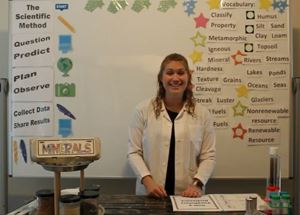
The science lab instructor will introduce the new vocabulary for unit 3.
The students will explore their new vocabulary dictionary resource for unit 3.
The stuudents will lern how to read scientific charts to find information.
Students will learn new vocabulary words, their meanings, and how to use them correctly when discussing scientific topics.
The teacher will practice the vocabulary with the students and model how to use the words correctly during an investigation.
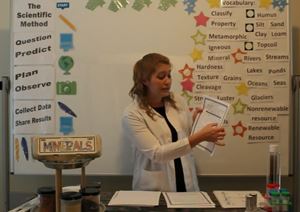
The science lab instructor will review the student work pages and explain possible solutions to the activities on the student work pages.
The instructor will present many possible answers to open ended questions and explain how to keep a daily science journal about the lesson.
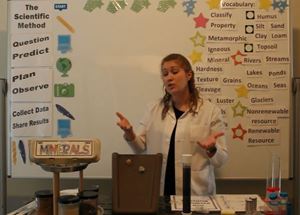
In this video lesson, the science lab instructor will review the three main classifications of rocks.
Students will learn examples of sedimentary rocks, their structure, and how they are formed using visual models and samples of sedimentary rocks.
Students will explore the formation of sedimentary rocks.
They will study examples of rocks that are of this type and compare the properties that these rocks have in common.
They will use scientific terms and vocabulary to relate to others their observations about this classification of rocks.
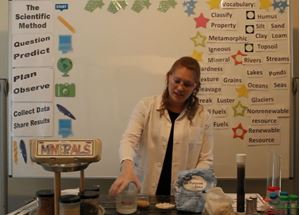
The science lab instructor will review the student work pages and explain possible solutions to the activities on the student work pages.
The instructor will present many possible answers to open ended questions and explain how to keep a daily science journal about the lesson.
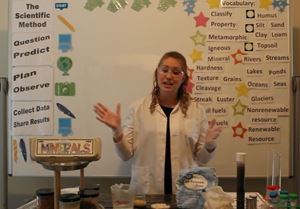
In this video, the science lab instructor will review the types of rocks.
The instructor will remind students of how sedimentary rocks are formed and materials that may be used to represent the sediment deposits in nature.
Students will create a model of their own that is formed the way a sedimentary rock is formed.
They will discuss attributes and properties of sedimentary rocks that their model has.
They will use the scientific process in order to create and describe their STEM project.
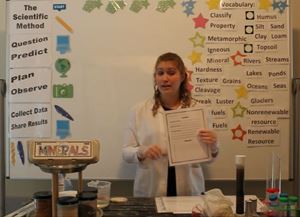
The science lab instructor will review the student work pages and explain possible solutions to the activities on the student work pages.
The instructor will present many possible answers to open ended questions and explain how to keep a daily science journal about the lesson.
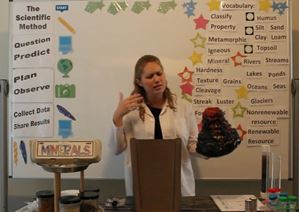
In this lesson video, the science lab instructor will review the three main types of rocks.
Students will learn about the characteristics and properties of rocks formed from molten rock (lava or magma).
The instructor will present real igneous rock samples, models, and visual aids while introducing igneous rocks.
Students will explore the formation of igneous rocks.
They will study examples of rocks that are of this type and compare the properties that these rocks have in common.
They will use scientific terms and vocabulary to relate to others their observations about this classification of rocks.
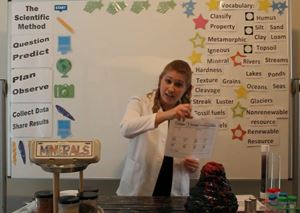
The science lab instructor will review the student work pages and explain possible solutions to the activities on the student work pages.
The instructor will present many possible answers to open ended questions and explain how to keep a daily science journal about the lesson.
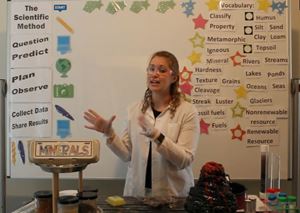
In this video, the science lab instructor will review the types of rocks.
The instructor will remind students of how igneous rocks are formed and materials that may be used to represent the molten rocks and minerals in nature.
Students will create a model of their own that is formed the way an igneous rock is formed.
They will discuss attributes and properties of igneous rocks that their model has.
They will use the scientific process in order to create and describe their STEM project.
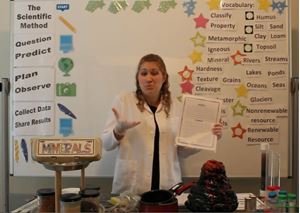
The science lab instructor will review the student work pages and explain possible solutions to the activities on the student work pages.
The instructor will present many possible answers to open ended questions and explain how to keep a daily science journal about the lesson.
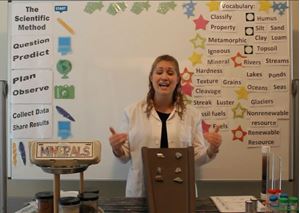
In this lesson video, the science lab instructor will review the three main types of rocks.
Students will learn about the characteristics and properties of rocks formed from heat and pressure causing changes to existing rocks.
The instructor will present real metamorphic rock samples, models, and visual aids while introducing metamorphic rocks.
Students will explore the formation of metamorphic rocks.
They will study examples of rocks that are of this type and compare the properties that these rocks have in common.
They will use scientific terms and vocabulary to relate to others their observations about this classification of rocks.
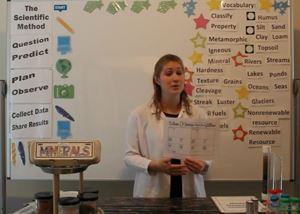
The science lab instructor will review the student work pages and explain possible solutions to the activities on the student work pages.
The instructor will present many possible answers to open ended questions and explain how to keep a daily science journal about the lesson.
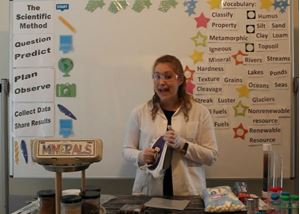
In this video, the science lab instructor will review the types of rocks.
The instructor will remind students of how metamorphic rocks are formed and materials that may be used to represent these rocks and the minerals that form them in nature.
Students will create a model of their own that is formed the way a metamorphic rock is formed.
They will discuss attributes and properties of metamorphic rocks that their model exhibits.
They will use the scientific process in order to create and describe their STEM project.
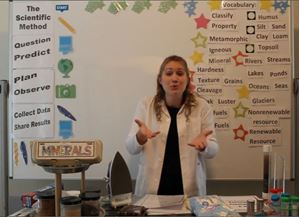
The science lab instructor will review the student work pages and explain possible solutions to the activities on the student work pages.
The instructor will present many possible answers to open ended questions and explain how to keep a daily science journal about the lesson.
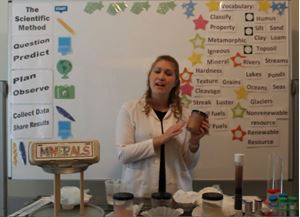
In this lesson video, the science lab instructor will present models of the four main classifications of soil: humus, sand, silt, and clay.
The instructor will discuss the individual composition, properties, and uses of the main types of soil using real models and samples of each type of soil.
Students will explore the four main types of soil.
They will identify and classify soil types based on their properties and uses.
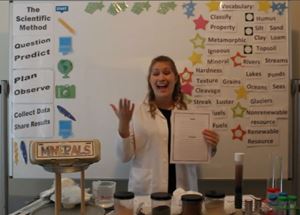
The science lab instructor will review the student work pages and explain possible solutions to the activities on the student work pages.
The instructor will present many possible answers to open ended questions and explain how to keep a daily science journal about the lesson.
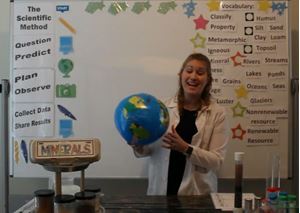
In this lesson video, the science lab instructor will present materials that are useful on Earth to be used as a source of energy.
The students will learn the differences between types of fuels including fossil fuels.
Students will discover alternative energy sources that are renewable on Earth as well as energy sources that are nonrenewable.
Students will explore the vocabulary terms renewable and nonrenewable resources on Earth.
They will discover ways to conserve resources and make good choices that will help to preserve the materials available.
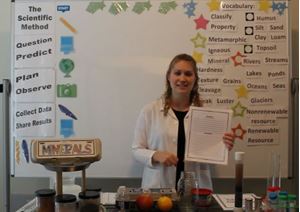
The science lab instructor will review the student work pages and explain possible solutions to the activities on the student work pages.
The instructor will present many possible answers to open ended questions and explain how to keep a daily science journal about the lesson.
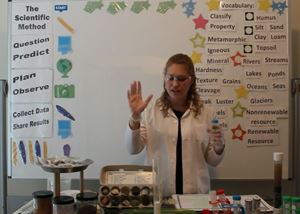
In this lesson video, the science lab instructor will present minerals as the building blocks of rocks.
Students will discover how minerals have distinct properties from one another.
The science lab instructor will review sample minerals and their individual properties using a mineral identification chart from the vocabulary dictionary resource.
The instructor will demonstrate the scientific tests used to identify the properties of minerals.
Students will explore the properties of minerals and the way that scientists classify minerals.
They will explore with minerals from a variety of sources to discover usefulness and availability of Earth’s minerals.
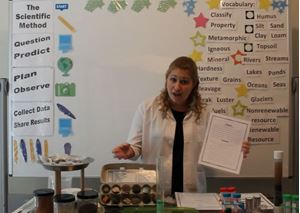
The science lab instructor will review the student work pages and explain possible solutions to the activities on the student work pages.
The instructor will present many possible answers to open ended questions and explain how to keep a daily science journal about the lesson.
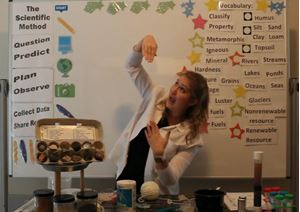
In this lesson video, the science lab instructor will present the ways that minerals form by exploring the individual crystal structures within minerals.
The instructor will demonstrate crystals with samples and visual aids.
The students will explore with a STEM project watching change over time as halite (salt) crystals gradually form during a four week experiment.
Students will practice making scientific observations to identify minerals based on their individual properties.
Students will grow crystals of their own during an experiment to explore the way crystals form to create mineral deposits naturally.
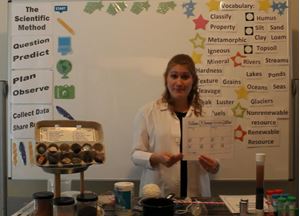
The science lab instructor will review the student work pages and explain possible solutions to the activities on the student work pages.
The instructor will present many possible answers to open ended questions and explain how to keep a daily science journal about the lesson.
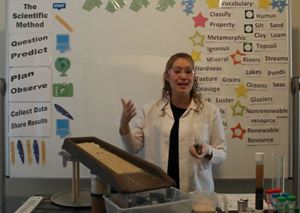
In this video lesson, the science lab instructor will present changes to Earth's surface caused by erosion from wind and water.
The instructor will model an example of changes farmers make to a field in the patterns of plowing trenches to route water and limit the erosion of soil through a water experiment.
Students will create a STEM project to explore paths and patterns to route water to limit erosion in fields for farmers.
Students will discover the things that can cause change on Earth’s surface.
They will discover how erosion from rivers and streams breaks down and wears away the surface of the Earth and deposit those pieces in new places to create new land forms.
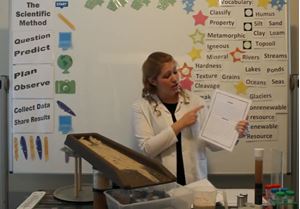
The science lab instructor will review the student work pages and explain possible solutions to the activities on the student work pages.
The instructor will present many possible answers to open ended questions and explain how to keep a daily science journal about the lesson.
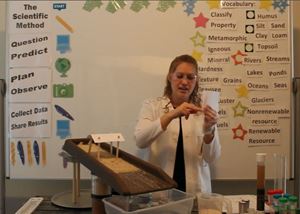
In this video lesson, the science lab instructor will demonstrate how erosion caused by ocean tides and waves can create devastation to the areas on the beach front.
The instructor will model an experiment exploring what happens to a home or lighthouse built on the ocean front as the ocean tides and waves erode the soil.
The students will create a STEM model of a home and ocean to explore the changes that happen to the land and formulating strategies to preserve the land that remains on the shore line.
Students will discover the things that can cause change on Earth’s surface.
They will discover how erosion from ocean tides breaks down and wears away the surface of the Earth and deposit those pieces in new places to create new land forms.
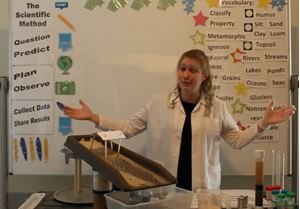
The science lab instructor will review the student work pages and explain possible solutions to the activities on the student work pages.
The instructor will present many possible answers to open ended questions and explain how to keep a daily science journal about the lesson.
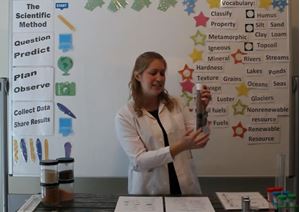
The teacher will review key vocabulary and terms with the students from this unit to prepare them for the unit test.
The teacher will review the experiments and lessons from this unit to refresh the vocabulary and key concepts.
Students will complete the written unit test on earth science.
Note: The written test will be on topics from the earth science unit. The test should be completed before students watch the next lesson video (Lesson 39). The answers to the test questions will be reviewed during the next lesson video.
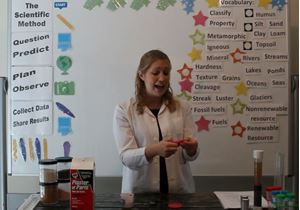
The science lab instructor will review the student work pages and explain possible solutions to the activities on the student work pages.
The instructor will present many possible answers to open ended questions and explain how to keep a daily science journal about the lesson.
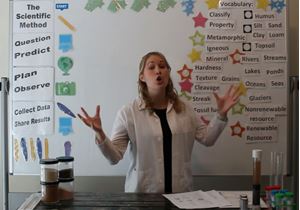
The teacher will review key vocabulary and terms with the students from this unit to review the unit test.
The teacher will review the experiments and lessons from this unit to refresh the vocabulary and key concepts.
Students will check the written unit test on earth science.
The teacher will address any possible misconceptions or difficult concepts during this review.
Note: The written test will be on topics from the earth science unit. The test should be completed before students watch this lesson video (Lesson 39). The answers to the test questions will be reviewed during this lesson video.
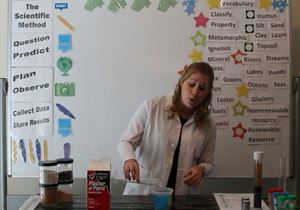
The science lab instructor will review the student work pages and explain possible solutions to the activities on the student work pages.
The instructor will present many possible answers to open ended questions and explain how to keep a daily science journal about the lesson.
